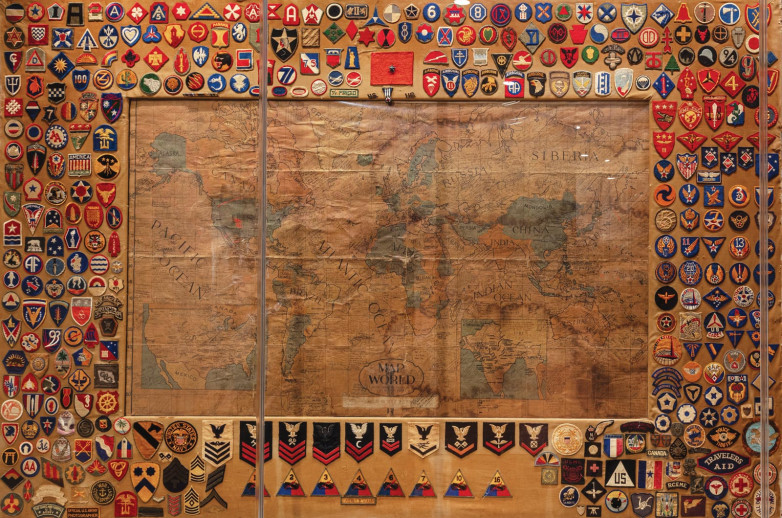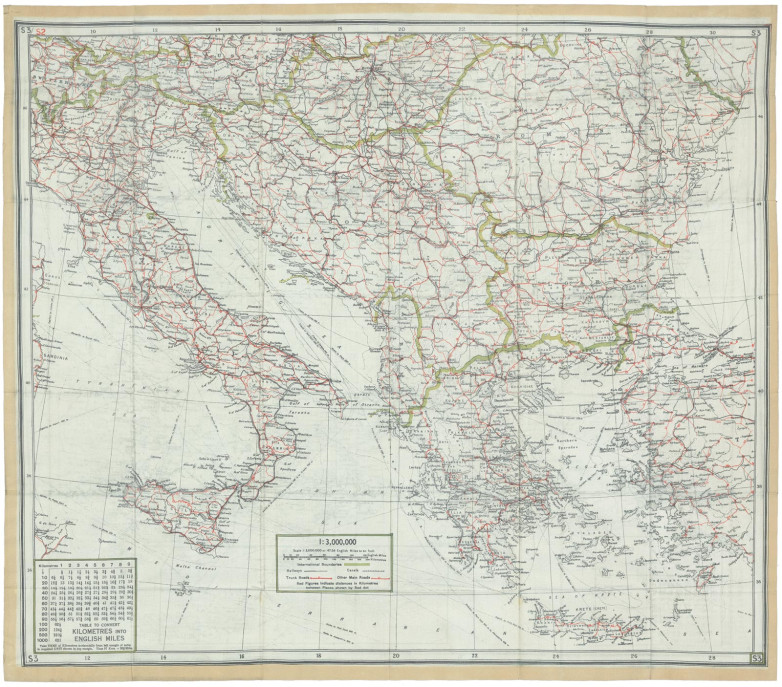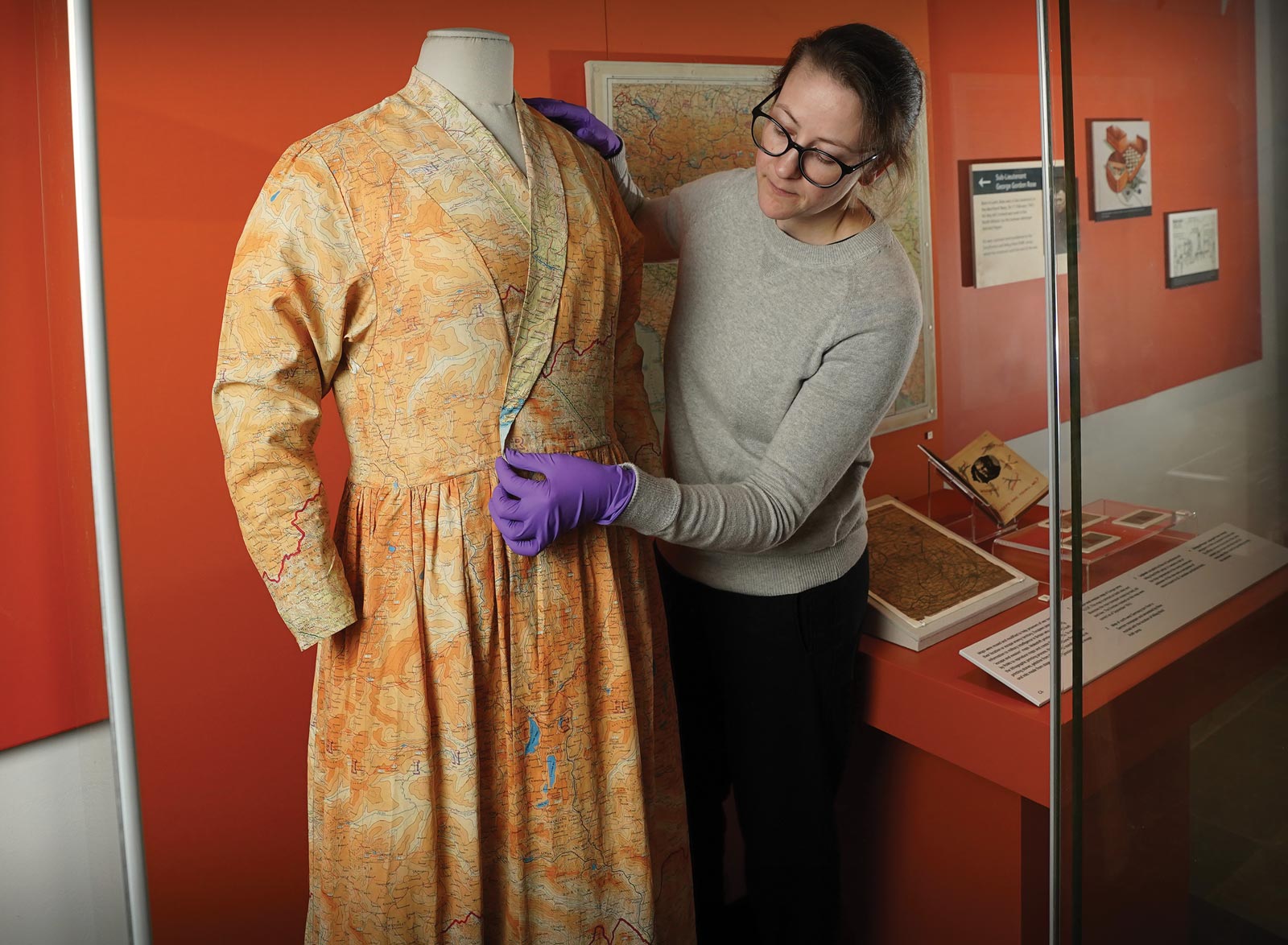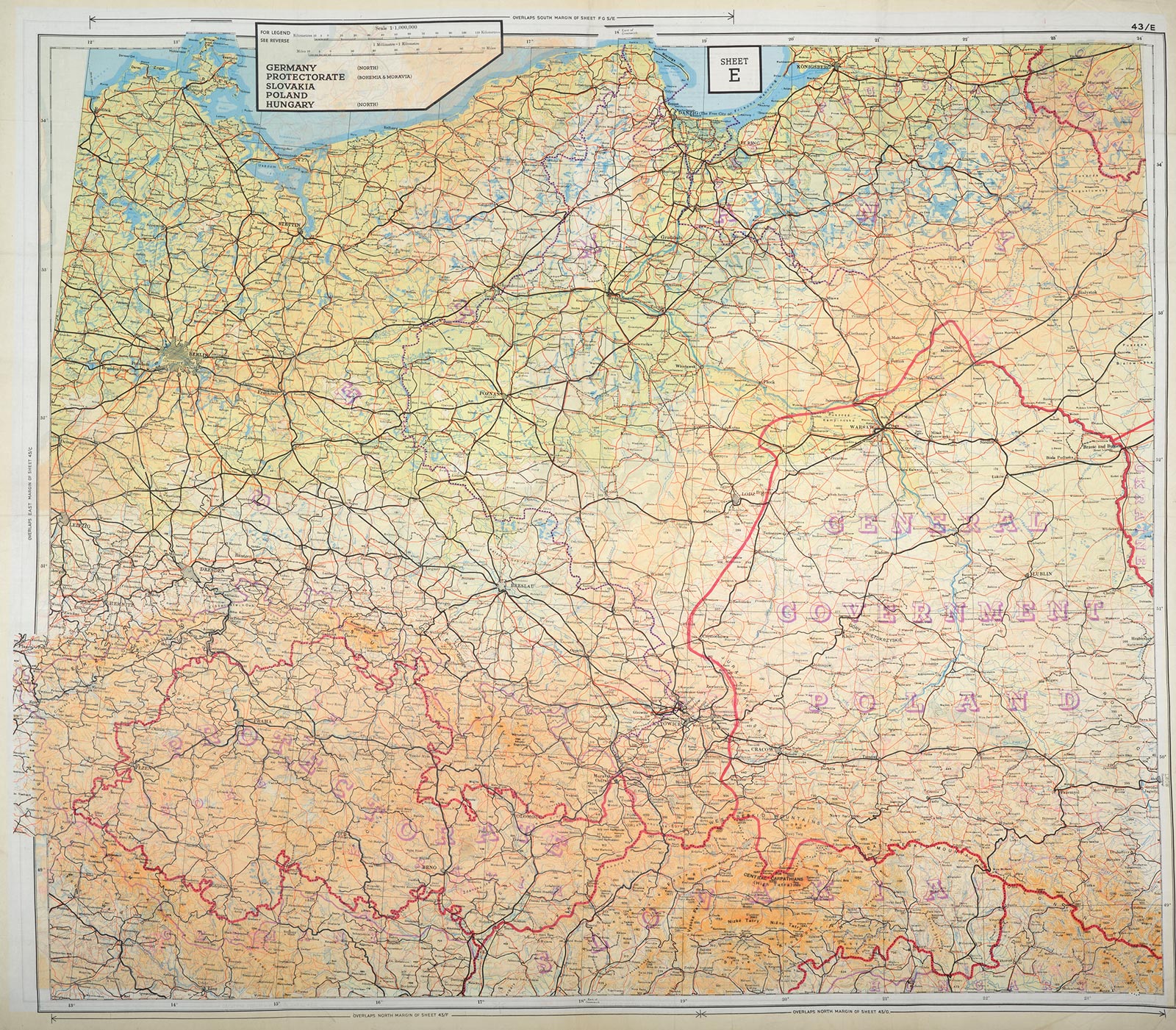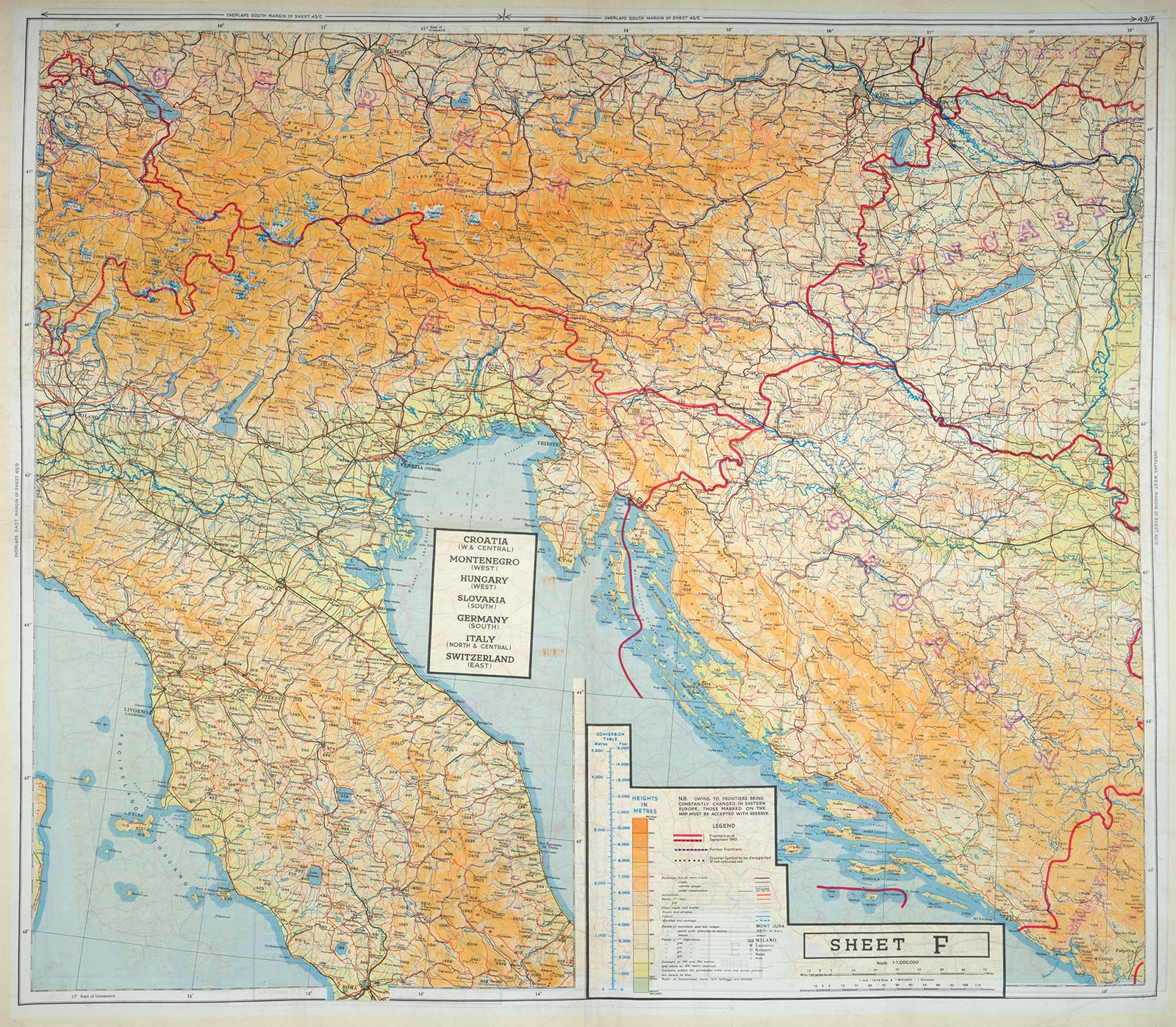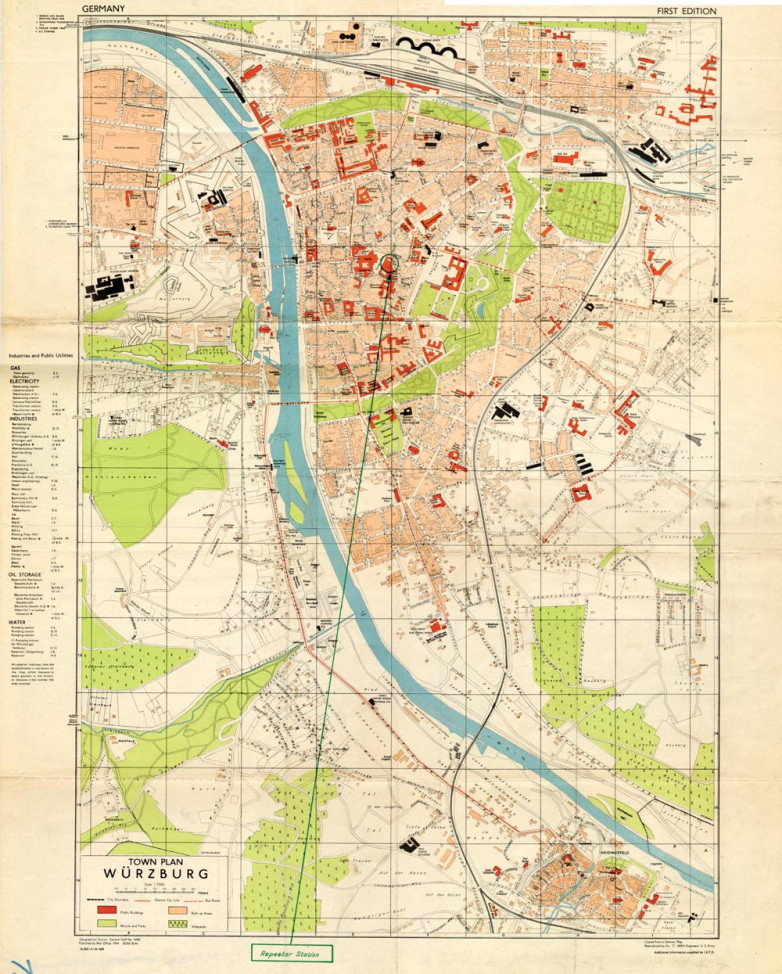This includes the escape maps on silk, like those used by Ogata, which were pioneered by Christopher Clayton Hutton, a British MI9 army officer. MI9 was a secret department during the war tasked with assisting in the escape of Allied personnel from prisoner-of-war (POW) camps and helping Allies evade capture behind enemy lines. Hutton considered maps to be, as he put it, “the escaper’s most important accessory” that should be used by all fliers.
Why silk? Quiet to open, waterproof, and easy to hide or sew into clothing, silk maps were issued to service members and often smuggled into POW camps for use in escape in a variety of ways, such as folded inside a chess piece, hidden in a vinyl record, or laminated inside playing cards. One of the most striking pieces in the Edinburgh exhibition is a dress made after the war from silk escape and evade maps.
“Old maps allow us to see the shifts in our cultural values and learn from past experiences,” said Samuel Kim, a geospatial librarian at the University at Buffalo Libraries. Kim oversees 259 maps captured by the Allies during World War II, all of which were produced in Germany in the 1930s and ’40s.
A notable map at the University at Buffalo Libraries is of Würzburg, Germany; it is one of the few in the collection with Allied markings, highlighting key military targets. Kim said of the map with a smile, “The cartographer thought wine and chocolate shops were worth labeling on the map, and we can learn something from that.”
Witnesses to History
“Maps offer us a window into the past and help us understand not just a geographic perspective but also a perspective on what was considered important and meaningful to both creators and users,” said Toni M. Kiser, senior registrar and director of collections management at the National WWII Museum. “We have maps with blood stains from injuries sustained in combat and commemorative maps made by units and ships at the end of the war to show the history of it for them.”
During the war years, the British Armed Forces alone produced 342 million maps. These maps, of course, serve a historical purpose. Kim observed, “They allow us to track changes over a given area.”
But, more than that, they can now serve as a way to tell a story through cartography. “These are pivotal moments in one’s life,” Harris said. “There’s a sense of a visceral experience moving through the world. These maps represent that.”
When examining these maps, a viewer can envision Hutton perfecting an escape from his office in Buckinghamshire to be smuggled into a POW camp in Germany, Stevenson at the train station wishing the best for a soldier off to war, and Ogata walking through Hungary trying to find his way. “They saved these maps for a reason,” Harris said. “They were important to them during the war; they helped keep them alive, and they chose to keep them long after their service ended.”
The maps they clutched in their hands led them on, and they still lead us today to a greater understanding of who they were and what they went through. Approximately sixteen million Americans served in World War II. Only around 120,000 are still alive today. These maps are a way to continue to tell their stories and offer insights into their courageous lives.




